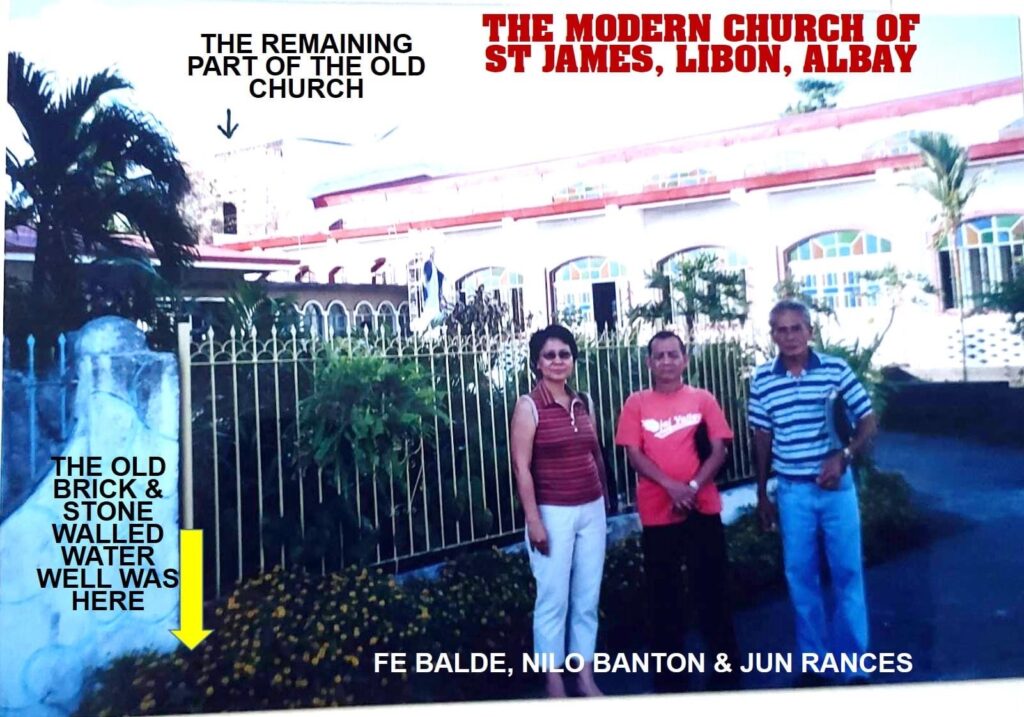By Abdon M. Balde Jr.
SANTIAGO DE LIBON; THE FIRST SPANISH GARRISON IN BIKOL
In 1571, after Captain Juan de Salcedo and Martin de Goiti reached and occupied Manila, they received reports from those who sailed with Fray Alonzo Jimenez and Don Luis Enriquez de Guzman to Gibalong in 1569 that the people in the south of Manila were wearing jewelries and ornaments of gold in their body. This prompted Salcedo to gather soldiers and they set an expedition to the south of Luzon. They passed by Majayjay in Laguna and continued to recruit warriors.
True enough, they reached the gold mining town of Paracale and raided the gold mines. However, on December 28 of that year, Salcedo’s exploration was cut short when his uncle, Miguel Lopez de Legazpi sent a messenger named Hurtado and ordered him to return to Manila. But Salcedo vowed to return to Bicol.
In early 1573, Salcedo made his second trip to Bikol, along with Alferez Pedro de Chavez by tracing the same route to Paracale. Then he continued sailing the Bikol River upstream until they reach Bato Lake. Then they trekked up the plains and set up a garrison and named it Santiago de Libong. The then Governor General of the Philippines sent this report to the King of Spain: “With the service of God and that of your Majesty in mind…I dispatched Captain Juan de Salcedo in July, seventy three with one hundred and twenty soldiers in vessels like those used by those natives, to win over and conquer Bikol River and the province of Los Camarines, on the east side of this island of Luzon. He brought under the dominion and obedience of your Majesty all that region, with about twenty thousand of its natives, with as little injury as possible.” It was a report that veiled their ulterior motive of searching for what they believed was El Dorado—the city of gold south of Luzon.
Having made enemies from the settlements along the Bikol River that they raided for gold, Santiago de Libong did not last long. In fact it was not included among the “villas” along with Villa Fernandina in Vigan, Villa Sto Nino in Cebu, and Villa Arevalo in Iloilo. The excuse made by another report was that “…the life of Libon as a Spanish city must have been a very short one, for documents written a few years later fail to include it among the cities founded by the Spaniards at this early stage of the conquista. What probably happened is that the pacification of Bicol effected by Legaspi, though quite successful, remained in a precarious condition and could not guarantee the continuity of the little city hurriedly organized by the Pizarro of the Philippines.” In fact, Pedro de Chavez soon returned to Manila in July 24, 1574, with his hoard of gold.
There are conflicting reports as to when and where the Spanish garrison called Santiago de Libong was set up. There are some reports stating that the garrison was set up immediately after Capitan Juan de Salcedo attacked Paracale in 1571. Some other historians state that it was during the second expedition of Salcedo in 1573 that the garrison, and consequently the town of Libon was founded.
It was also reported that the garrison was made of bamboo and light materials and could not be relied on to safeguard the Spaniards in case of an attack by the aggrieved natives. Thus, because of their precarious condition, Alferez Pedro de Chavez who was entrusted by Salceda to defend it, abandoned the garrison and left for Manila. When Chavez was sent back to the Bicol Region in 1579, he did not return to Libon, he instead founded a city in Camarines called Nueva Caceres—in honor of the home city in Spain of Governor Francisco de Sande.
There were reports that a church was built by the Spaniards in Santiago de Libong. Thus, when I was looking for the remains of the garrison Santiago de Libong, I went to the site of the Church of Saint James in the center of the town of Libon and inspected the remains of the old church. I only found four old buttresses at the back of the church. The area was used as a dumping ground for garbage. I also found an old water well which rim was made of blocks of stone near the convent. An old man said that the well was used by the Spaniards during the colonization period. Sadly, this well could no longer be seen because the Parish covered it with a gazebo and installed images of angels made of concrete. Thus, an important cultural heritage was lost.
Then someone informed me that the garrison was not in the center of Libon but in a village called Linao, some 4 kilometers from the town and on the banks of the river Quiba. I visited Linao and was guided to a resident called Arturo Osorman—who told me a very disturbing tale. According to him, he bought a piece of land uphill a few meters away from his house and when he started to till it, he unearthed many old bricks strewn all over the place. Not knowing what to do with it, he looked for whoever was interested to buy it. He was able to find a buyer sometime in the 1970s and the bricks were excavated and loaded on seven 10-wheeler trucks! Where were the bricks brought? He said, he was informed that the bricks were to be used as partitions in fishponds in Cavite! Another important cultural heritage was lost.


